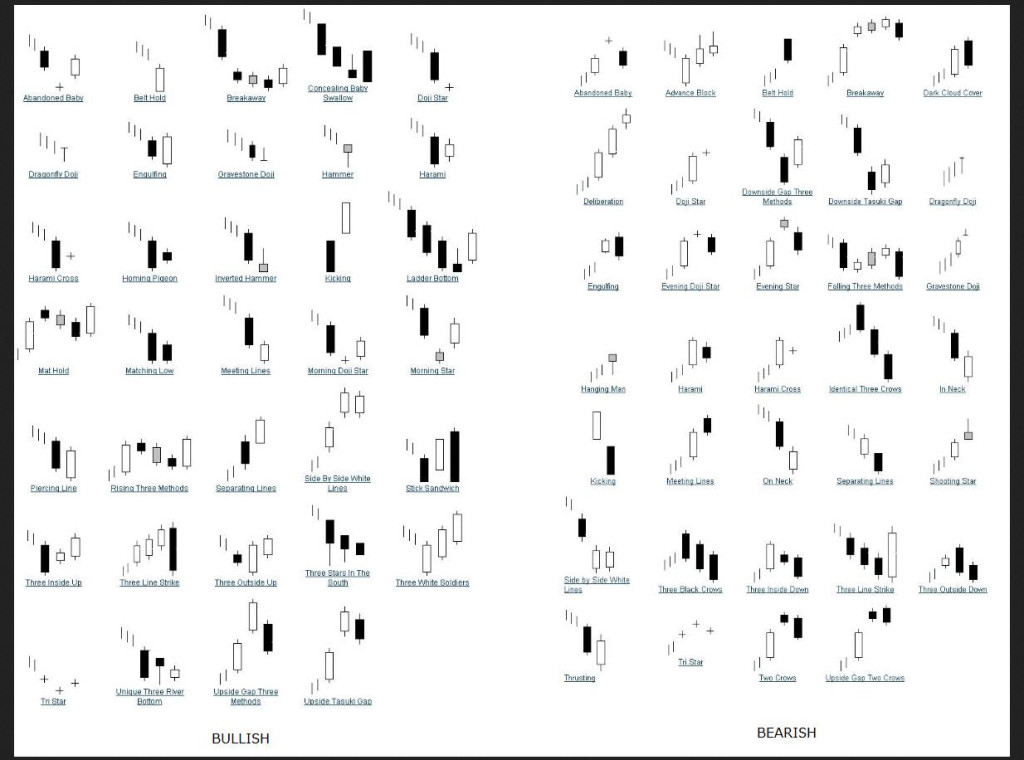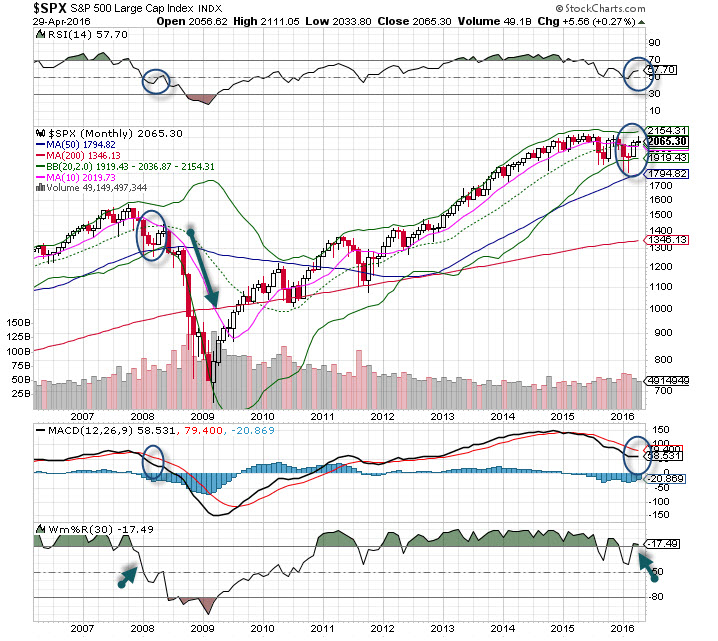We often look at charts to find recognizable and repeatable patterns that may have a high probability of happening again. In the universe of technical analysis, we have a plethora of technical patterns with setups for both bullish and bearish plays. But the most important element of chart analysis is to keep an open mind, identify a pattern, decide which way it’s most “likely” to move, and play it accordingly. We’re not always going to be right, but this is not a game of perfect. With that said, the 2016 SPX 500 chart has a similar pattern as it did in 2008.
Below are some of the most identifiable candle chart patterns that I use (thank you to Steven Burns at traderslaboratory.com for this great table). In a future article, I’ll talk about some of these patterns and which ones are the best to follow.
When someone asks me about the current market condition and whether we are in bull or bear market territory, I refer them to the longer term monthly chart. Bull and bear markets are long term conditions, so we need to see how patterns are constructed on these charts before making an assessment. A monthly chart has less noise. When it’s in bullish territory, that typically means there is more confidence among investors, especially the large institutions that are mostly long term investors.
I’ve been saying for a year that we are still in a bear market – ever since the very important MACD indicator crossed to the bearish side. Now, a monthly chart is very slow, and it took many months to get this indicator to turn (see chart). However, we have seen some of the largest and most spectacular rallies within bear markets.
Identifying repeatable patterns put the odds in our favor, but since timeframes are always different and characteristics change, we have to analyze the entire picture. The SPX 500 just finished it’s fourth month of 2016, and when I look at the 2016 SPX 500 chart, I see an identified pattern to early 2008. Now, we all know what happened later in 2008. Bear Stearns collapsed in the spring, and then the entire financial system nearly collapsed.
While we cannot argue with the identical candle patterns, other factors must be considered before we believe the markets will completely roll over. Interest rates today are at all time lows. Back in early 2008, that was not the case. Central bankers are easing with reckless abandon today, and given their aggressive nature, traders and investors can expect to be hit by big shocks. Do you remember some of those big gaps (up and down) over the last few years after ECB Chair Draghi and BOJ Premiere Kuroda publicly spoke?
Momentum indicators and relative strength are better today than in 2008. Yet, these indicators take a back seat to the price action, and that is where we must look at the identical patterns from 2008 and 2016. While a catalyst caused the fall in 2008, clearly this pattern foretold the events that would follow, so we are now aware. We’ll not jump in front of the pattern yet, as we don’t have a trend yet. As always, confirmation is needed. We’ll keep an eye on the 2016 SPX 500 chart, looking for a very dark candle over this next month (as we had in 2008). If we see it, it will be the first sign that more downside could be on the horizon.
Copyright: imtmphoto / 123RF Stock Photo






















